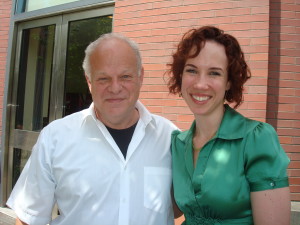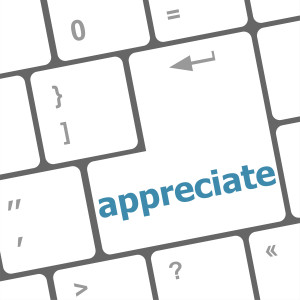 An Interview with Shannon Polly, MAPP and Kathryn Britton, editor of Positive Psychology News Daily
An Interview with Shannon Polly, MAPP and Kathryn Britton, editor of Positive Psychology News Daily
en*theos International Day of Happiness Virtual Conference
Kathryn: Good morning Shannon, thank you for joining me here we are in celebration of world happiness day. Before we jump into your topic, Appreciative Inquiry, could you tell us a bit about yourself?
Shannon: Sure, thanks for having me Catherine. I am a positive psychology practitioner, I’m a coach, a facilitator, trainer, speaker and I live in Washington DC. I have my own consulting company call Shannon Polly and Associates and I also found an organization called Positive Business DC and our mission is to increase the tonnage of happiness starting in the nation’s Capitol, but not limited to the nation’s Capitol, so my passion is around helping individuals and organizations learn how to flourish by using training and positive psychology practices.
Kathryn: Alright thank you, so tell us a little bit about Appreciative Inquiry, those are very powerful words, what do they mean when you put them together?
Shannon: That’s a very good question; appreciative is usually we think of it as looking at something that’s good and that we would like to look at, something we appreciate. Appreciative also means to appreciate, to raise in the value so when we look at what is working, what’s good, we also elevated, we raise it in value and inquiry means to ask questions. So together it is how are you constructing unconditionally positive questions and what does that lead you to discover. So it’s a process, it’s a change management process discovered by or created a theory founded by David Cooperrider from Case Western Reserve in the early 1980s and he was working with organizations and you know the traditional way of working with organization is to do a SWAT analysis. You know it’s a very defined way of what’s the problem, what’s the root cause analysis, let’s brainstorm some solutions and you know develop a treatment plan. And he really flipped that on its head and said you know if you keep looking what the problems are in the organization, you become an expert in the problems. What if we looked at what’s working in an organization, what strengths does an organization have and how can we leverage those strengths to create a vision of the future because there’s some principles that AI follows that show that we really, we really follow what vision of the future we create and one of those is that we live in a world that our questions create. So every action is preceded by a question. So if you are questioning your life is you know “what’s wrong with me?”, well you are going to find things that are wrong with you. If the question is “what’s right with me? What’s working?”, that’s what you’re going find and that’s what you can leverage.
Another principle of AI is that is the poetic principle that what we focus on grows so wherever you put your attention that’s what’s going to grow. So that’s why Appreciative Inquiry wants to focus on what’s working. And the third is this the Simultaneity Principle, so change begins the moment you ask the question. So the moment you ask the question “what’s wrong with me?” usually our energy drops and we get very serious and you know our vision contracts, but if the first question is “what’s working in this organization I would leverage it?”, change begins the moment you ask that question too.
The fourth principle is the Anticipatory Principle and that is it positive images actually pulls us forward, it’s like heliotropic effect in plants, plants grow towards the light and we’re similar. We like to grow towards what’s with possible, what inspires us. And the final principle is the Positive Principle, that positive emotions lead us to positive actions. There is a lot of research from Barbara Fredrickson, out of UNC Chapel Hill that the Broadmanville Theory that when you engender positive emotions, it leads people to see more, people are more creative, they are more collaborative, they are less racially biased, it leads to better health, all sort of things.
So Appreciative Inquiry takes all of these processes and in psychology which tends to look at just the individual person because that’s easier to test, AI looks at an organization as a whole and how you can leverage that, so I think that is one of the major distinctions is that it just doesn’t focus on an individual, it focuses on an organization or people as a whole.
Kathryn: Wow, I’m not sure I’ve ever heard it explained quite so clearly, so thank you Shannon. Alright so how did you get started with appreciative inquiry?
Shannon: Well I was a student of David Cooperrider’s in the MAPP program of University of Pennsylvania and…
Kathryn: And what does MAPP stand for?
Shannon: MAPP stands for the Master of Applied Positive Psychology, so it’s a terminal master degree at the University of Pennsylvania. There is only one master program of its kind in the United States and that was founded by Dr. Martin Seligman and Dr. Cooperrider was a guest lecturer and probably one of the most inspiring lecturers we had and he started taking us through what’s known as the “Four D” process. So it’s discovering the strength of an organization, dreaming of the future, designing the future, so based on what you want to create and what you want to have happen and then delivering what the future is. He took us through the process, he just didn’t lecture, he gave us an experiential view of it. And I think from that moment everyone in the room wanted to try it out themselves.
Kathryn: So can you tell us about a time when you tried it out, what happened and what was it like?
Shannon: Sure, well I did a sort of a smaller version of summit, sort of two of the four D’s with Westin Hotels, and my co-facilitator Jeremy McCarthy and I coupled it with the VIA strengths survey is a character strength survey that you can find on Viame.org, and so what we did is because AI focuses on strengths, we decided to give people a little grounding in that, just to help reorient them from the negativity bias and to help them get the specific strength to talk about. So we had them take the survey, we started off the day with a little mini-lecture about strengths and this specific survey and then we launched into the discover portion of it. We had people interview each other and what’s interesting is that I wasn’t quite sure what we would get out of it, we had a limited period amount of time and the manager of the hotel said “you know we just wanted to have, you know what we would really love you know the numbers that customers wants number to go up” and I thought I’m not sure that just doing discover and dream is really going to help you there but you know we’ll try.
Kathryn: Might as well.
Shannon: And what was fascinating is that all throughout the day, he was so amazed that people who were temporary workers were standing up and speaking or taking the microphone, were engaging and at the end of the day one of the most powerful piece of feedback was someone wrote “I didn’t know how much longer I would be working here but I’m so inspired by this vision of Westin’s future, that I’m going to stay”. And that was a really powerful moment because it made me realize that when you really engage all the stakeholders and you make everyone’s voices important, it’s amazing what you can accomplish.
Kathryn: So that was a small group, I’ve heard that AI can be used with small groups, you know maybe family size groups and big groups like you know entire organizations at once. What do you know; I mean what can you tell us about how AI works with different size groups?
Shannon: Well I have been involved with small and medium size group, I have also been a part of summits for the entire city of Cleveland and the entire city Cincinnati so for those summit they were between 5 and 800 people in one room for about three days. And you would think that it would be complete chaos just trying to have people self-organize those groups and what’s interesting is that the process is so well structured and loose at various times that it allows for that flexibility and actually having more people means that you get more ideas and more creativity in the room. So I’ve actually seen a whole city summit of Cincinnati engage people more than a group of say 20 and didn’t have all the stakeholders involved because it was too insular.
So I would say that organizations tend to be scared to have too many people. I think we need to have just the right number of people. I would say have all the stakeholders if you can in a room because that’s where you going to get the most creativity, the most generative ideas and collaboration.


